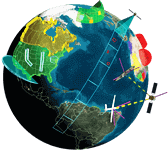 In the ever-evolving landscape of academic research, the significance of data analysis cannot be overlooked. As scholars embark on their doctoral journeys, the process of data analysis is tasking. However, in this digital age, technology has paved the way for innovative solutions to streamline this intricate process. One such tool that has gained substantial popularity in the realm of qualitative data analysis is NVivo. This software, developed by QSR International, provides a robust platform for researchers to analyze and visualize their data, making it an invaluable asset for dissertation research. At the heart of any successful dissertation lies the ability to extract meaningful insights from data, and NVivo excels in this regard. It offers a versatile environment where researchers can organize, code, and analyze their qualitative data with ease. From interviews and surveys to textual documents and multimedia content, NVivo can handle a wide array of data types, making it a versatile tool for researchers across various disciplines. Data visualization is a crucial aspect of modern research, as it enables researchers to present their findings in a clear and engaging manner. Through the use of charts, graphs, and visual representations, complex data can be made comprehensible and impactful. NVivo not only aids in the analysis of data but also provides robust data visualization capabilities. Researchers can create compelling visualizations to support their arguments and convey their research findings effectively. When it comes to harnessing the power of using NVivo for data visualization in dissertations, one name stands out as a beacon of expertise and proficiency, Data Analysis Help.net. With a dedicated team of experienced researchers and NVivo specialists, we can offer the best NVivo project data analysis services in the industry. Our commitment to excellence, attention to detail, and a deep understanding of research methodologies ensure that your analysis is conducted with precision and accuracy. We understand that each research project is unique, and our services are tailored to meet your specific needs. Whether you are at the initial stages of data collection or require advanced data visualization for your dissertation, our team is equipped to provide comprehensive support. With us, you can be confident that your data analysis will be a seamless and successful endeavor. We will showcase the power of NVivo in qualitative data analysis and demonstrate how effective data visualization can elevate your research to new heights.
In the ever-evolving landscape of academic research, the significance of data analysis cannot be overlooked. As scholars embark on their doctoral journeys, the process of data analysis is tasking. However, in this digital age, technology has paved the way for innovative solutions to streamline this intricate process. One such tool that has gained substantial popularity in the realm of qualitative data analysis is NVivo. This software, developed by QSR International, provides a robust platform for researchers to analyze and visualize their data, making it an invaluable asset for dissertation research. At the heart of any successful dissertation lies the ability to extract meaningful insights from data, and NVivo excels in this regard. It offers a versatile environment where researchers can organize, code, and analyze their qualitative data with ease. From interviews and surveys to textual documents and multimedia content, NVivo can handle a wide array of data types, making it a versatile tool for researchers across various disciplines. Data visualization is a crucial aspect of modern research, as it enables researchers to present their findings in a clear and engaging manner. Through the use of charts, graphs, and visual representations, complex data can be made comprehensible and impactful. NVivo not only aids in the analysis of data but also provides robust data visualization capabilities. Researchers can create compelling visualizations to support their arguments and convey their research findings effectively. When it comes to harnessing the power of using NVivo for data visualization in dissertations, one name stands out as a beacon of expertise and proficiency, Data Analysis Help.net. With a dedicated team of experienced researchers and NVivo specialists, we can offer the best NVivo project data analysis services in the industry. Our commitment to excellence, attention to detail, and a deep understanding of research methodologies ensure that your analysis is conducted with precision and accuracy. We understand that each research project is unique, and our services are tailored to meet your specific needs. Whether you are at the initial stages of data collection or require advanced data visualization for your dissertation, our team is equipped to provide comprehensive support. With us, you can be confident that your data analysis will be a seamless and successful endeavor. We will showcase the power of NVivo in qualitative data analysis and demonstrate how effective data visualization can elevate your research to new heights.
Can Nvivo Software Be Used To Analyze Different Types Of Data?
Yes, NVivo is a versatile qualitative data analysis software that can be used to analyze various types of data. It is designed to help researchers and analysts manage, organize, and gain insights from different forms of qualitative data. NVivo supports the analysis of:
- Textual Data: NVivo can analyze text data, such as interviews, surveys, articles, transcripts, and open-ended responses. Researchers can code, categorize, and search through textual content to identify patterns and themes.
- Audio and Video Data: It allows for the analysis of audio and video recordings, making it useful for researchers working with interviews, focus groups, or multimedia content. Users can transcribe, code, and analyze these media files within the software.
- Survey and Social Media Data: NVivo can import data from surveys, social media platforms, and online forums. Researchers can analyze and code responses, comments, and posts to extract meaningful insights.
- Images and Photos: It has image analysis capabilities, enabling researchers to code and analyze visual content, such as photographs, diagrams, or scanned documents.
- Literature and Bibliographic Data: NVivo can help researchers manage and analyze literature, citations, and bibliographic information for literature reviews and systematic reviews.
- Spreadsheet and Structured Data: While NVivo is primarily designed for qualitative data, it can also handle structured data, such as Excel spreadsheets, to facilitate mixed-methods research.
What Are The Common Methods Of Nvivo Data Analysis Used In A Dissertation?
NVivo is a popular software tool for qualitative data analysis, commonly used in dissertations and research projects across various disciplines. Here are some common methods of dissertation data analysis using NVivo:
- Coding and Categorization: Researchers can code and categorize text, audio, or video data to identify themes, patterns, and concepts within the data. This process helps in organizing and structuring the information.
- Content Analysis: NVivo facilitates content analysis by allowing researchers to analyze and compare the frequency of specific words or phrases within the dataset, aiding in understanding the prevalence of certain themes or concepts.
- Node-Based Analysis: Researchers create nodes (categories) to group related data segments. These nodes can be hierarchical, enabling the exploration of data at various levels of abstraction.
- Querying and Searching: NVivo allows for complex searches and queries within the data, making it easier to find specific information or patterns, and assisting in hypothesis testing.
- Visualizations: Researchers can generate visual representations such as charts, graphs, and word clouds to illustrate patterns and trends, aiding in the presentation of findings.
- Case Comparison: NVivo enables researchers to compare and contrast cases or participants, which is valuable in comparative and cross-case analysis.
- Framework Analysis: Researchers can use NVivo to apply the Framework Analysis approach, a systematic and structured method for thematic analysis.
- Memos and Annotations: Researchers can create memos and annotations to document their thought processes, which can be useful for reflexivity and ensuring transparency in the research process.
- Integration of Mixed-Methods Data: NVivo allows for the integration of both qualitative and quantitative data, facilitating mixed-methods research.
How Can Our Data Analysts Make The Analysis Process Easier Using Nvivo?
Our NVivo dissertation data analysts can streamline the analysis process. They begin by carefully organizing and importing their data into NVivo, ensuring that it's structured in a way that aligns with their research objectives. Also, our analysts can take advantage of NVivo's powerful coding and annotation features to systematically label and categorize data, making it easier to identify patterns and themes. Utilizing NVivo's query and search functions allows for efficient data retrieval and cross-referencing, facilitating deeper insights. Collaboration can be enhanced by sharing NVivo projects with team members, enabling simultaneous analysis and seamless data sharing. Additionally, NVivo offers various visualization tools, such as charts and graphs, which can help our analysts communicate findings effectively. More so, regularly saving and versioning projects ensures data integrity and provides a safety net in case of unexpected errors. By employing these strategies, our data analysts can make their analysis process more efficient and productive using NVivo, ultimately leading to more robust and insightful research outcomes.
 The utilization of NVivo is crucial as it significantly enhances the quality and depth of research. This software offers a versatile platform for managing, analyzing, and presenting complex datasets, making it an indispensable asset for researchers across various disciplines. There are key aspects of NVivo's data analysis capabilities, including its ability to handle diverse data types, facilitate coding and thematic analysis, and support the exploration of patterns and relationships within the data. The flexibility of NVivo allows researchers to adapt their analysis to the specific needs of their research questions, ensuring that the findings are robust and insightful. Furthermore, effective data visualization not only enhances the presentation of research findings but also aids in the comprehension and interpretation of complex data. NVivo's integration with various data visualization tools and techniques empowers researchers to create compelling and informative visuals that can communicate their findings more effectively to both academic and non-academic audiences. In today's data-driven world, the ability to harness the power of NVivo is a valuable skill for any researcher. It not only streamlines the research process but also elevates the quality and impact of the research outcomes. As researchers continue to explore new frontiers and tackle increasingly complex problems, NVivo will undoubtedly remain a critical ally in their journey toward advancing knowledge and contributing to their respective fields. Therefore, mastering NVivo's capabilities is a wise investment for any aspiring scholar and an essential tool for those seeking to make a meaningful impact in their academic pursuits.
The utilization of NVivo is crucial as it significantly enhances the quality and depth of research. This software offers a versatile platform for managing, analyzing, and presenting complex datasets, making it an indispensable asset for researchers across various disciplines. There are key aspects of NVivo's data analysis capabilities, including its ability to handle diverse data types, facilitate coding and thematic analysis, and support the exploration of patterns and relationships within the data. The flexibility of NVivo allows researchers to adapt their analysis to the specific needs of their research questions, ensuring that the findings are robust and insightful. Furthermore, effective data visualization not only enhances the presentation of research findings but also aids in the comprehension and interpretation of complex data. NVivo's integration with various data visualization tools and techniques empowers researchers to create compelling and informative visuals that can communicate their findings more effectively to both academic and non-academic audiences. In today's data-driven world, the ability to harness the power of NVivo is a valuable skill for any researcher. It not only streamlines the research process but also elevates the quality and impact of the research outcomes. As researchers continue to explore new frontiers and tackle increasingly complex problems, NVivo will undoubtedly remain a critical ally in their journey toward advancing knowledge and contributing to their respective fields. Therefore, mastering NVivo's capabilities is a wise investment for any aspiring scholar and an essential tool for those seeking to make a meaningful impact in their academic pursuits.
How to Use NVivo to Analyze Data in a Dissertation | Best Guide
 Embarking on a dissertation journey is a monumental task for any graduate student. It is a culmination of years of hard work, research, and dedication to a specific field of study. The dissertation represents not only a deep understanding of the subject matter but also the ability to synthesize and analyze data effectively. In this digital age, harnessing the power of advanced software tools can significantly enhance the research process. One such tool that has revolutionized the way researchers analyze data is NVivo. It is a robust qualitative data analysis software that provides a systematic approach to managing, organizing, and deriving meaningful insights from your research data. Whether you are exploring complex narratives, conducting in-depth interviews, or sifting through vast amounts of textual data, NVivo can be your trusted companion throughout your dissertation journey. The software is designed to streamline the process of data analysis, allowing researchers to uncover patterns, themes, and connections within their data sets. Its user-friendly interface and powerful analytical capabilities make it an invaluable asset for both novice and experienced researchers. But how can NVivo help you specifically in the context of your dissertation? We understand that the prospect of diving into a new software tool can be intimidating, especially when the stakes are high in the form of your dissertation. That's why we will not only explore the features and functionalities of NVivo but also show you how we can help to analyze data in a project using NVivo. Our team of experts has extensive experience in utilizing NVivo to its full potential. We will walk you through the step-by-step process of importing, coding and analyzing your data within NVivo. You'll learn how to create nodes, develop coding frameworks, and visualize your findings effectively. We'll also provide tips and tricks to ensure you make the most out of NVivo's capabilities while saving valuable time and effort in the process. Your efforts deserve nothing less, and that’s why we are ready to guide you on the best way to use NVivo to analyze dissertation data.
Embarking on a dissertation journey is a monumental task for any graduate student. It is a culmination of years of hard work, research, and dedication to a specific field of study. The dissertation represents not only a deep understanding of the subject matter but also the ability to synthesize and analyze data effectively. In this digital age, harnessing the power of advanced software tools can significantly enhance the research process. One such tool that has revolutionized the way researchers analyze data is NVivo. It is a robust qualitative data analysis software that provides a systematic approach to managing, organizing, and deriving meaningful insights from your research data. Whether you are exploring complex narratives, conducting in-depth interviews, or sifting through vast amounts of textual data, NVivo can be your trusted companion throughout your dissertation journey. The software is designed to streamline the process of data analysis, allowing researchers to uncover patterns, themes, and connections within their data sets. Its user-friendly interface and powerful analytical capabilities make it an invaluable asset for both novice and experienced researchers. But how can NVivo help you specifically in the context of your dissertation? We understand that the prospect of diving into a new software tool can be intimidating, especially when the stakes are high in the form of your dissertation. That's why we will not only explore the features and functionalities of NVivo but also show you how we can help to analyze data in a project using NVivo. Our team of experts has extensive experience in utilizing NVivo to its full potential. We will walk you through the step-by-step process of importing, coding and analyzing your data within NVivo. You'll learn how to create nodes, develop coding frameworks, and visualize your findings effectively. We'll also provide tips and tricks to ensure you make the most out of NVivo's capabilities while saving valuable time and effort in the process. Your efforts deserve nothing less, and that’s why we are ready to guide you on the best way to use NVivo to analyze dissertation data.
How Does Nvivo Ease The Process Of Data Analysis In Dissertations?
NVivo is a powerful qualitative analysis software that significantly eases the process of data analysis. NVivo facilitates and streamlines the research process, by ensuring simplicity in;
- Data Organization: NVivo allows researchers to import and organize various types of data, including text, audio, video, and images, in a centralized and structured manner. This helps researchers keep their data organized and easily accessible throughout the dissertation project.
- Data Coding: It offers robust coding capabilities, allowing researchers to systematically analyze and categorize their data. This process is crucial for identifying patterns, themes, and relationships within the data, which is fundamental to qualitative research.
- Text Analysis: With NVivo, researchers can perform in-depth text analysis by conducting keyword searches, text queries, and sentiment analysis. This helps researchers extract meaningful insights from large volumes of textual data, which is common in qualitative research.
- Data Visualization: The software provides various tools for data visualization, such as charts, graphs, and diagrams, which help researchers illustrate their findings effectively. Visual representations can make complex information more accessible and enhance the clarity of the dissertation.
- Literature Review Integration: It allows researchers to integrate their literature review into the analysis process. Researchers can link sources and articles to their data and coding, helping them to contextualize their findings and build a strong theoretical framework.
- Collaboration: It supports collaboration among researchers working on the same project, making it easier to share data, insights, and coding decisions. This is especially valuable for group dissertations or research conducted within research teams.
- Version Control: NVivo offers version control features, ensuring that researchers can track changes made during the analysis process and revert to previous versions if needed. This helps maintain the integrity of the research and minimizes the risk of data loss.
- Reporting and Export: It enables researchers to generate reports and export their findings in various formats, including Word, Excel, and PowerPoint. This simplifies the process of presenting research results and integrating them into the dissertation document.
What Are The Relevant Steps For Analyzing Dissertation Data Using Nvivo?
Analyzing dissertation data using NVivo, a popular software, involves several steps to effectively manage, organize, and extract meaningful insights from your data. Students must understand how to use NVivo to analyze data in a dissertation. Here is the best guide for analyzing data with NVivo;
- Start by importing your data into NVivo. This can include text documents, audio recordings, videos, or other qualitative data sources.
- Code your data by assigning labels or tags to specific sections or excerpts that are relevant to your research questions. NVivo allows you to create codes and sub-codes to categorize your data.
- Identify and develop themes or patterns in your data by grouping related codes together. This process helps you organize and structure your analysis.
- Use memos in NVivo to record your thoughts, ideas, and insights as you analyze the data. Memos can help you keep track of your thought process and provide context for your findings.
- Create and run queries in NVivo to search for specific patterns, relationships, or themes in your data. Queries can help you extract meaningful information from your coded data.
- NVivo offers various visualization tools, such as charts, diagrams, and word clouds, to help you present your findings in a clear and visually appealing manner.
- Integrate your findings with relevant literature to support your dissertation's theoretical framework and contribute to the existing body of knowledge.
- Continuously compare and contrast your data, codes, and themes to refine your analysis and ensure that your findings are consistent with your research questions.
- Consider techniques for validating your findings, such as member checking or peer debriefing, to enhance the credibility and trustworthiness of your analysis.
- Finally, write up your dissertation findings, using NVivo to support your arguments and conclusions with evidence from your coded data. Ensure that your dissertation is well-structured and follows the appropriate academic format.
- Regularly back up your NVivo project to prevent data loss and ensure the security of your research materials.
- Familiarize yourself with NVivo's features through training resources or seek support from the NVivo community or your institution's resources if you encounter any challenges.
 NVivo is an invaluable tool for analyzing data, offering a comprehensive and user-friendly platform to help researchers manage and analyze their data effectively. We have outlined the key steps involved in using NVivo, from importing and organizing data to conducting various types of analyses and generating meaningful insights. It is important to remember that NVivo is a versatile software that can be tailored to suit various research methodologies, making it suitable for a wide range of academic disciplines and research projects. Moreover, NVivo's features for data visualization, coding, and exploring patterns allow researchers to uncover hidden insights within their data, facilitating the development of well-informed arguments and conclusions. The ability to seamlessly integrate qualitative and quantitative data, as well as support for teamwork and collaboration, makes NVivo an excellent choice for dissertation research. In today's data-driven world, NVivo offers a powerful and efficient solution for managing and analyzing large and complex datasets. As technology continues to advance, NVivo remains at the forefront of research software, adapting to the evolving needs of researchers across the globe. Mastering NVivo and implementing the strategies can greatly enhance the quality of data analysis in a dissertation, ultimately contributing to the successful completion of a research project and the development of new knowledge in one's field of study.
NVivo is an invaluable tool for analyzing data, offering a comprehensive and user-friendly platform to help researchers manage and analyze their data effectively. We have outlined the key steps involved in using NVivo, from importing and organizing data to conducting various types of analyses and generating meaningful insights. It is important to remember that NVivo is a versatile software that can be tailored to suit various research methodologies, making it suitable for a wide range of academic disciplines and research projects. Moreover, NVivo's features for data visualization, coding, and exploring patterns allow researchers to uncover hidden insights within their data, facilitating the development of well-informed arguments and conclusions. The ability to seamlessly integrate qualitative and quantitative data, as well as support for teamwork and collaboration, makes NVivo an excellent choice for dissertation research. In today's data-driven world, NVivo offers a powerful and efficient solution for managing and analyzing large and complex datasets. As technology continues to advance, NVivo remains at the forefront of research software, adapting to the evolving needs of researchers across the globe. Mastering NVivo and implementing the strategies can greatly enhance the quality of data analysis in a dissertation, ultimately contributing to the successful completion of a research project and the development of new knowledge in one's field of study.


 NB: Sometimes we need to first assess your work to quote accordingly. Equally we may highlight a service input review on your placed order to confirm if the paid amount is
NB: Sometimes we need to first assess your work to quote accordingly. Equally we may highlight a service input review on your placed order to confirm if the paid amount is
